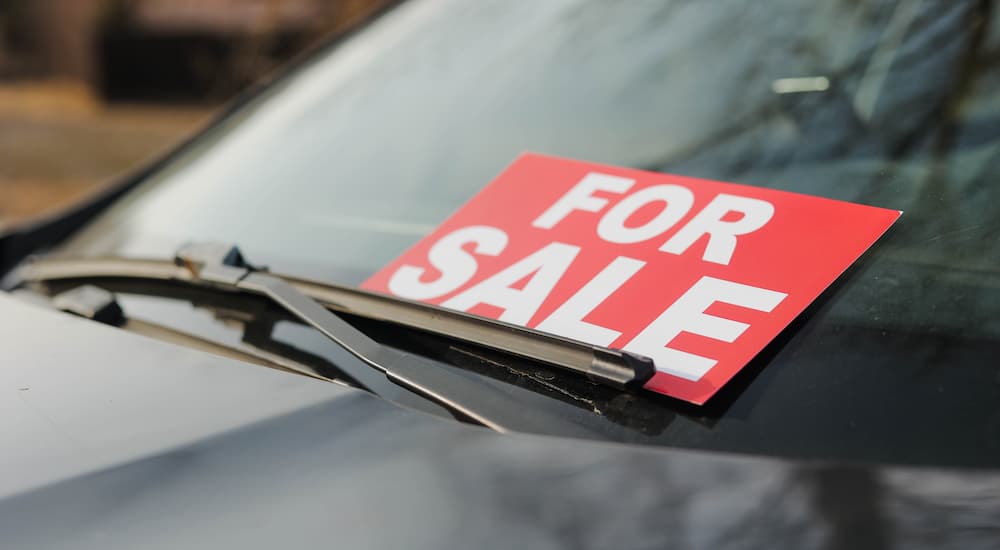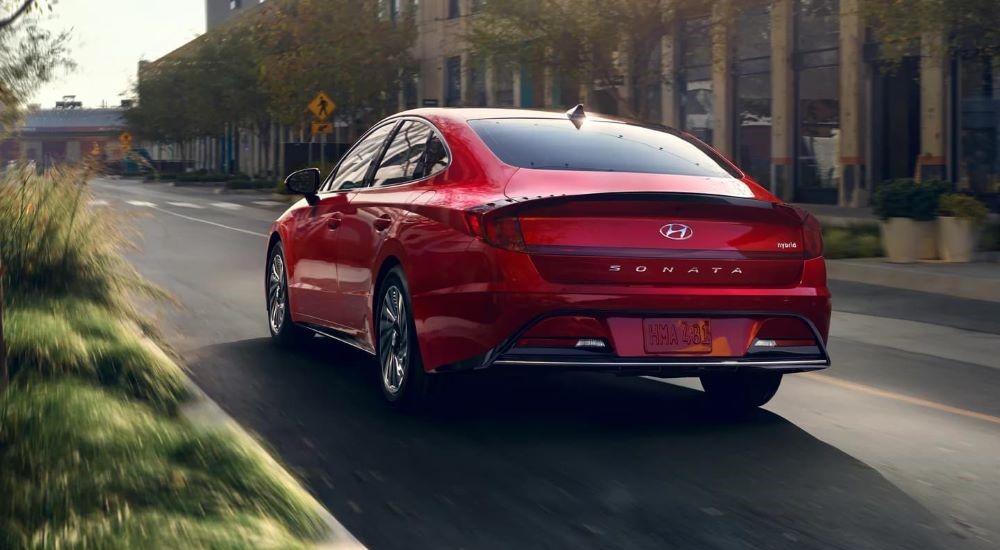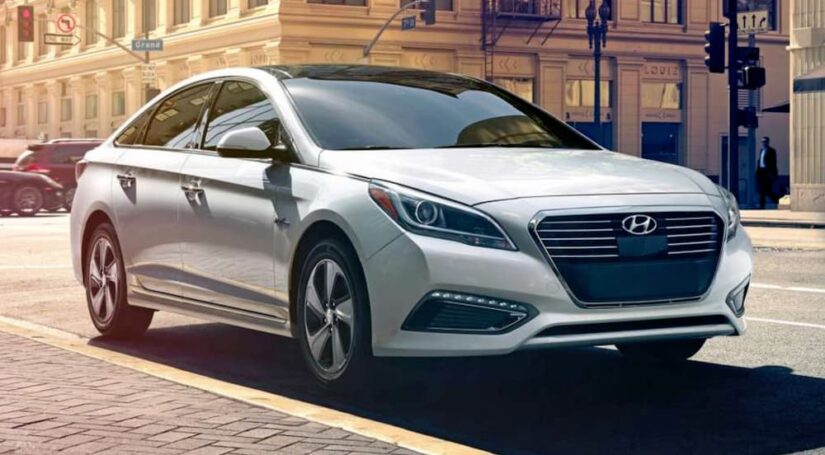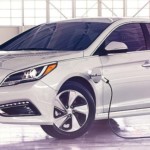In early 2022, I was desperate for a vehicle to replace my 2009 Toyota Yaris. While the Yaris gave me several good years, Northeast winters took their toll, and the vehicle failed inspection due to structural rust. If I couldn’t find another vehicle, it was only a matter of time before I either got a ticket for an uninspected car or suffered a major incident.
That said, there were certain things I was looking for. Along with my writing work, I’m also an auto racing announcer and musician, which means a lot of travel. So I needed a vehicle that was fuel-efficient, comfortable, and a little bigger than the Yaris to fit my expanding collection of music equipment. I also needed a car that was reliable for those added miles. Finally, I wanted to pay for it in full from my savings, which were decent but certainly not wealthy-person level, so I wouldn’t have to worry about monthly loan payments or credit impact.
All this eventually led me to a 2017 Hyundai Sonata SE, which I’ve now been driving for three years. As part of the latest entry in the “What We Drive” series, I wanted to share my experiences with the car in hopes that others can learn something for their next vehicle purchase.

Shopping Experience: Taking a Chance
The 2017 Hyundai Sonata is the fifth car I’ve owned over a 16-year span. Before this vehicle, I piloted a Cadillac Catera, a Honda Civic, a Nissan Sentra, and the Yaris. I don’t recall the model years for all of them, but suffice it to say they were used and had plenty of miles. The Sonata, on the other hand, is the closest I’ve ever come to purchasing a new vehicle. It was five years old at the time and only had a little over 30,000 miles on the odometer.
How was I able to get it within my pay-upfront budget? I did it with a well-calculated risk. My dad alerted me to a dealership specializing in cars rebuilt from accident and flood damage. As such, they cost significantly less, thousands of dollars less, than a non-rebuilt car. Obviously, there was a higher possibility of hidden damage or something going wrong, and the rebuild status meant the manufacturer’s warranty was no longer valid. However, having purchased several cars from them, my dad believed it was worth the risk, and I trusted his input.
So I went to the dealership, tried out a flood-salvage Sonata, and found it to my liking. Because the sticker price was so low to start, there was no negotiating, but I knew that was the case going in. The dealership provided a full list of what parts had been replaced during the rebuild and included a one-year powertrain warranty. Even though it didn’t apply, Hyundai’s long-standing 10-year/100,000-mile powertrain warranty on new cars gave me the confidence I was buying a solid steed.
The Early Days
My Sonata ownership, unfortunately, began on a down note. Barely a week into leaving the dealer lot, the vehicle’s longer length bit me. While backing out of the carport at my dad’s house, I misjudged when to turn and severely wrinkled the left front fender. After a little cussing and a few tears, my dad and I decided to turn the incident into a chance to spend time together on some DIY repair. So we pulled out the dents as best we could, then repainted the fender. Clearly, I’m not a master automotive painter, because I had to touch the fender up a few weeks ago, but I think I did a reasonable job making lemonade from lemons.
Apart from that early crunch, I enjoyed my early days with the Sonata. Its 2.4L I-4 engine was EPA-estimated for 36 MPG on the highway, but on some trips, I approached 40 MPG, rivaling my previous Yaris even with nearly twice as much horsepower and a trunk full of musical equipment. Speaking of the trunk, it held plenty of gear, measuring 16.3 cu.ft. to the 9.3 cu.ft. Yaris cargo area. My six-foot-one frame also appreciated the increased legroom, headroom, and shoulder room.
Also notable is that the Hyundai Sonata was the first vehicle I’ve owned with a built-in infotainment screen, Android Auto, HD Radio, a backup camera, or even a USB port. Although these are routine features to some, they were revolutionary to me and greatly enhanced the driving experience. The included SiriusXM capability played a role in my eventually subscribing to satellite radio, and there was still a CD player for my custom podcast discs. The combination of touchscreen, physical, and steering wheel controls was welcome as I could use whichever was most comfortable.

Born a Ramblin’ Man
My driving has only increased since I purchased the car. In 2024, I traveled an estimated 19,000 miles, 13,000 of which were for races and shows, and that number may go higher this year. In three years, I’ve put nearly 45,000 miles on the odometer, ranging from sunny highway driving to slogging through winter snow and slush.
The Sonata has handled it beautifully. Apart from the fender incident, there have only been two notable issues. One is that the oil drain plug gasket was damaged and needed replacement. The other is that the trunk latch actuator stopped working, forcing me to temporarily open the trunk by manually unlocking it. I learned later that the actuator is a common failure point for this model year, and there is even a recall related to the latch getting damaged from high heat. Fortunately, both issues were inexpensive, easy fixes.
Beyond this, all I’ve needed so far is standard maintenance: oil and filter changes, replacing brake pads, new tires, repairing the occasional windshield and paint chip, etc. I also applied a lesson from the Yaris and have gotten my Sonata undercoated the last two winters for rust protection. I’m getting closer to the stage of the car’s life where I’ll need to start worrying about things like coolant changes and spark plugs, and I’ll be on top of those, too.
How I Feel About My Sonata Now
After three years and counting, I can confidently say I’m happy with my 2017 Hyundai Sonata. It’s efficient, roomy, and does everything I need it to. There’s still the possibility something could crop up related to the flood it experienced, but having made it this far, I think the odds of that are low. Unless my driving needs change significantly or I’m involved in a major crash, I plan to drive the vehicle until it can no longer pass inspection.
That said, I have a few nuggets of wisdom for anyone else on the vehicle market.
- Only buy a rebuilt car if you plan to drive it for a long time. Even if you’re willing to accept the potential risk, like I was, others are not, which will hurt the resale value.
- When buying a used or rebuilt car, make sure it’s from a brand with a proven history of reliability. Used vehicles are a great way to save, but not if the car has a reputation for constant breakdowns and problems.
- Find a parking lot or other space where you can spend some time getting used to the vehicle’s dimensions. Otherwise, you might end up with a wrinkled fender or worse.
- Take care of your car with regular maintenance and by properly addressing small issues. Ignoring them will cost you more in the long run.
Last but not least, think about what you genuinely need from a vehicle. Buying a larger car will often cost more, but it’s worth it if you’re tall or constantly haul gear. Conversely, you don’t need to spend money on a massive engine or high-performance suspension if the primary purpose is to get from point A to point B. I like an adrenaline rush as much as anyone, but I’ve never even taken my Sonata out of the Eco drive mode. (I’ll buy a separate car for excitement whenever I have the money and space.) Owning a car that matches your lifestyle will give you the most satisfaction.



